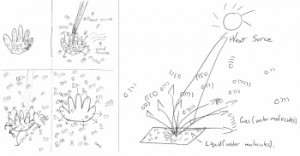Doodling is often seen as a sign of distraction. If you're doodling, you're not paying attention. If you're drawing, you're not taking notes. You're not listening. You're not learning.
But research published in the latest edition of the journal Science challenges the anti-doodling stance. It contends that not only can doodling help students learn, but that drawing is an important tool for scientific discovery.
The researchers -- Shaaron Ainsworth, Vaughan Prain, and Russell Tytler -- argue that scientists rely on visualizations in order to make sense of their observations and discoveries. Words alone -- as notes or as longer explanation and analysis -- aren't enough. By extension then, creating drawings is important for all those engaged in scientific inquiry, whether they're scientists or students.
The research suggests that when students draw a scientific concept, such as a sound wave, they understand it better. But just as important as their understanding, perhaps, drawing helps them feel more engaged and excited about learning.
"The most striking thing was the effort that students would apply to learning about science when they read and then drew what they could understand from the text, and how much enjoyment they derived from doing this," researcher Shaaron Ainsworth told LiveScience. "This was in comparison to just reading text, or indeed writing summaries after seeing diagrams or seeing pictures and text. In my experience, learning through drawing is often therefore both effective and enjoyable."


